![]()
![]()
![]()
Use LEFT and RIGHT arrow keys to navigate between flashcards;
Use UP and DOWN arrow keys to flip the card;
H to show hint;
A reads text to speech;
12 Cards in this Set
- Front
- Back

|
Alfalfa (Medicago sativa) – A. Pinnately (narrow) trifoliate leaf; B. outer one-half to one-third of leaflet is serrated;C. short, raceme type inflorescence with spiral-like seed pod.
|
|
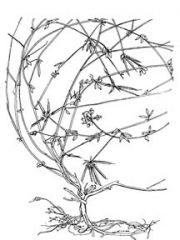
|
Birdsfoot Trefoil (Lotus corniculatus) – A. Pinnately (5 leaflets) compound leaf; B. not pubescent; C. yellow to orange umbel inflorescence; D. seed pods resemble shape of bird’s foot.
|
|

|
Kentucky Bluegrass (Poa pratensis) – A. Has a narrow, v-shaped blade with boat-shaped leaftip; B. rhizomes; and C. open panicle with small spikelets grouped in clusters.
|
|
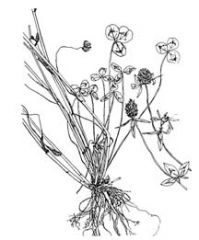
|
Ladino clover (Trifolium repens) – A. Palmately (broad) trifoliate with v-shaped watermark; B. weakly serrated leaflet; C. no trifoliate leaf from bloom to stolon; D. white with a pinkish hue to inflorescence. White clover is a smaller variety of the clover.
|
|
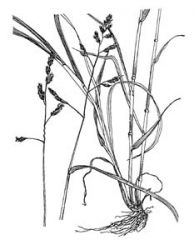
|
Orchardgrass (Dactylis flomerata) – A. Broad, v-shaped blade with very prominent midrib, sheath flattened, keeled; B. ligule is very tall and membranous; C. broad yellow collar; D. panicle inflorescence with clumped spikelets.
|
|
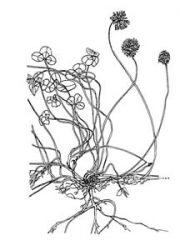
|
Red clover (Trifolium pratensen) – A. Palmately trifoliate leaf with football-shaped leaflets and v-shaped watermarks; B. sheath-like stipule; C. distinctly pubescent; D. has a trifoliate leaf just below a red inflorescence.
|
|

|
Smooth Bromegrass (Bromus inermis) – A. Wide, flat blade, sheath round (closed to near the top); B. large open panicle inflorescence; C. rhizomes; D. water mark on the blade (an M or W mark across the middle of the blade).
|
|
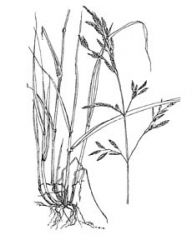
|
Tall Fescue (Festuca arundinacea) – A. Rough, flat blade, with prominent veins and pointed tip; B. auricles are small, short, and hairy; C. short rhizomes and stems flat but not sharply keeled; D. open panicle with spikelets.
|
|
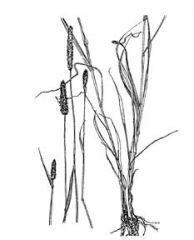
|
Timothy (Phleum pratense) – A. Broad flat smooth blade; B. panicle inflorescence as a dense cylinder; C. corms (bulb-like shape) found at base of stem
|
|

|
Yellow sweetclover (Melilotus officinalis) – A. Pinnately trifoliate leaf; B. completely serrated leaflet; C. long and erect yellow raceme inflorescence; D. small stipules. There is also a white sweetclover (Melilotus alba) that looks the same except it has a white inflorescence.
|
|
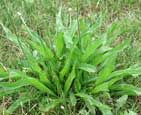
|
Buckhorn plantain forms a spreading or upright basal rosette of narrowly oval leaves that grow above a long, sturdy taproot with lateral branches. Stems 4-12 in long;
|
|
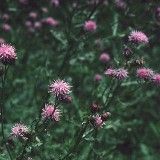
|
Canada thistle is a 2 to 5 foot (0.6 to 1.5 meters) tall forb with deep, wide spreading, horizontal roots. The grooved, slender stems branch only at the top and are slightly hairy when young, becoming covered with hair as the plant grows. The oblong, tapering, sessile leaves are deeply divided, with prickly margins. Leaves are green on both sides with a smooth or slightly downy lower surface. Numerous small, compact (3/4 inch or 1.9 cm. diameter), rose-purple or white flowers appear on upper stems from June to September. Seeds are small (3/16 inch or 0.5 cm long), light brown, smooth and slightly tapered, with a tuft of tan hair loosely attached to the tip.
|

